Lomé is the capital of Togo. The city is known for its markets, colonial-era architecture, and seaside promenade.
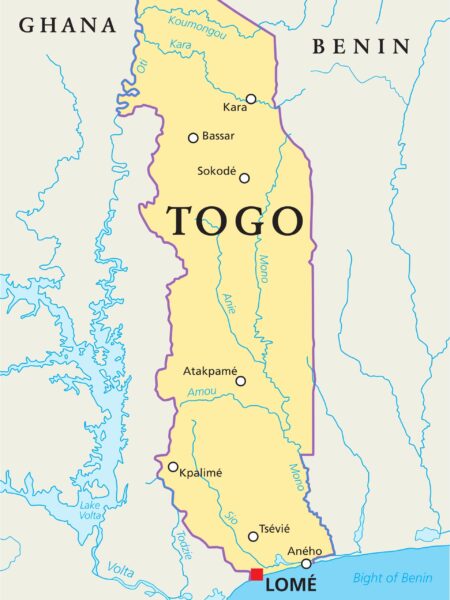
Lomé serves as the country’s administrative and industrial center and its main port and plays a crucial role in Togo’s economy and cultural landscape.
Where is Lomé?
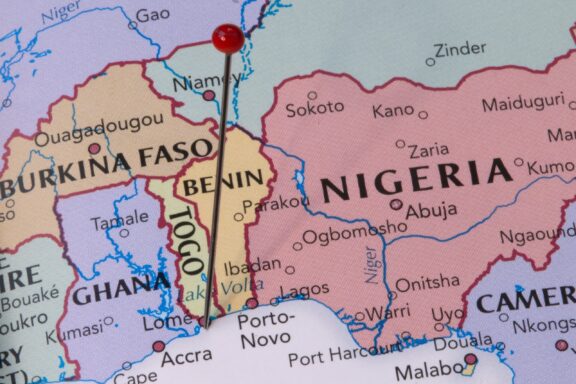
Lomé is located in the southwestern part of Togo, along the Gulf of Guinea on the Atlantic Ocean. It lies near the border with Ghana, west of the city. It is at the southernmost point of Togo and is strategically positioned on Africa’s western coast, making it easily accessible from different parts of the continent.
Lomé is approximately 6.1 degrees North latitude and 1.2 degrees East longitude. It’s well-connected to other major cities and regions within Togo and neighboring countries via a network of roads and highways.
History of Lomé
The area that is now Lomé was originally a tiny fishing village inhabited primarily by the Ewe people. The region was predominantly agricultural, with fishing and small-scale trading activities. Tribal conflicts and local politics shaped early community structures, but it wasn’t a major activity center in pre-colonial times.
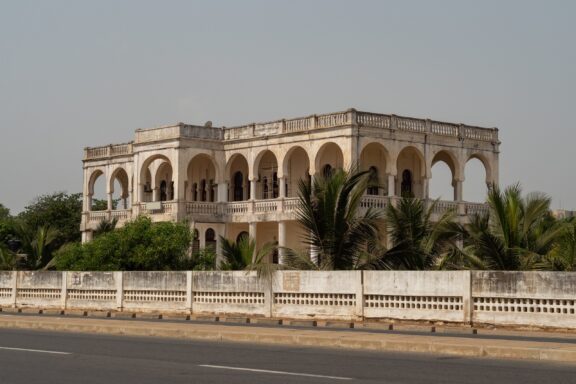
In 1884, Germany declared a protectorate over the area, designating Lomé as the capital of German Togoland. The city saw significant infrastructure development during this time.
Roads were built to connect Lomé to other parts of Togoland and beyond. Moreover, a quay was established to facilitate maritime trade. German architecture began to influence the cityscape, and a structured administration was implemented.
After World War I, the League of Nations divided Togoland between France and Britain. Lomé fell under French control and maintained its status as the capital. The city experienced further development during this period, especially in its port facilities.
French colonial architecture began to mix with existing structures, adding a new layer of cultural complexity. It became an important center for the export of colonial goods like coffee and cocoa.
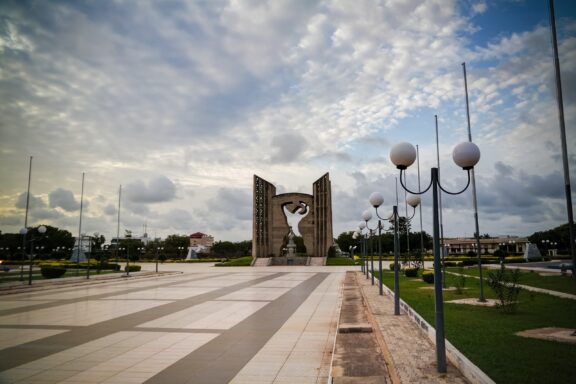
Togo became independent on April 27, 1960, with Sylvanus Olympio as its first president. Political instability marred this period as Olympio was assassinated in a coup d’état 1963.
Despite the turbulence, Lomé grew as an administrative and commercial center. Educational institutions were built, including establishing the University of Lomé in 1970, offering higher education and contributing to the city’s intellectual landscape.
Today, Lomé is a mix of modernity and tradition. While it has seen economic growth in sectors like trade and services, it has also experienced challenges, such as political unrest and issues of urbanization. However, the city remains essential to Togo’s identity and a focal point for political, economic, and cultural activities.
This deeper look into each period offers a nuanced understanding of how Lomé has evolved into the multifaceted city it is today.
Features of Lomé
Lomé captivates visitors and residents with its architectural diversity, where colonial-era buildings stand alongside contemporary structures. The city’s streets offer an eclectic commercial activity, from high-end shops to local markets.
The seaside promenade offers a refreshing contrast to the busy city life, providing a place for locals and tourists to unwind. The Atlantic Ocean is a stunning backdrop, reinforcing Lomé’s maritime character.
Geography and Climate
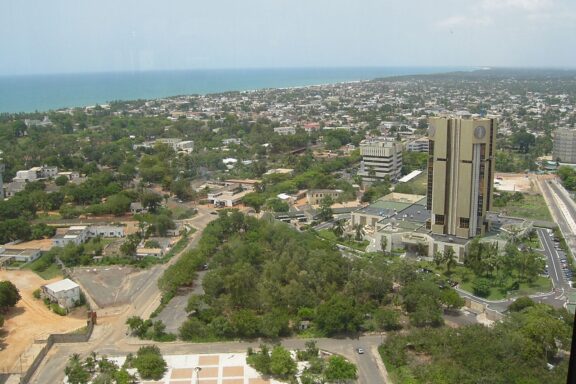
The city experiences a tropical wet and dry climate, characterized by a dry season from November to April and a wet season from May to October.
The proximity to the Atlantic Ocean also moderates the climate, making it relatively mild compared to other West African cities. Temperatures typically range from 23 °C (73 °F) to 32 °C (89 °F) throughout the year.
Population
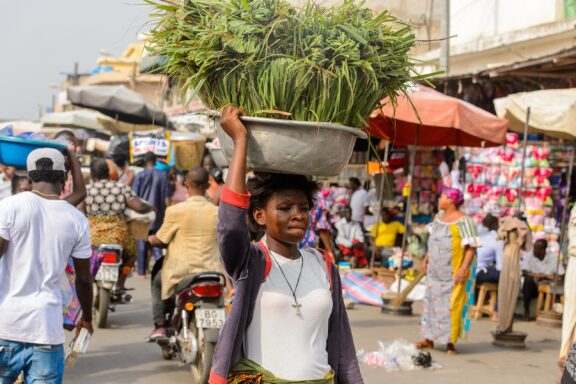
With a population exceeding 830,000, Lomé is Togo’s largest city and is home to an ethnically varied community. The Ewe people primarily inhabit the town but also have a significant presence of other ethnic groups from within Togo and expatriates and migrants from neighboring countries.
French is the official language, but Ewe and other indigenous languages are widely spoken. The city has a youthful population, with a high percentage of residents under the age of 30, reflective of the country’s overall demographic profile.
Economy
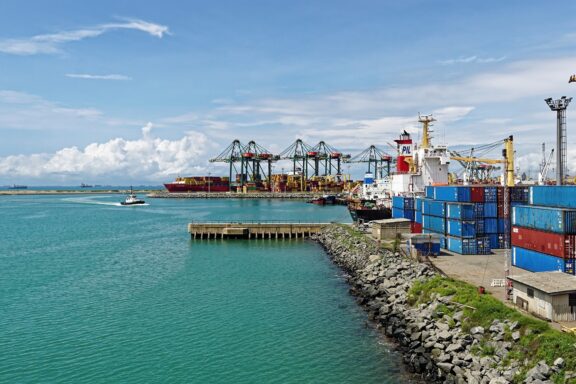
Lomé plays a central role in Togo’s economy. Apart from its status as the central port city, it is also a hub for several types of commerce and industry. The service sector is booming, including banking, telecommunications, and tourism.
The presence of the University of Lomé also makes education a vital industry. Small-scale manufacturing and trade are also critical, especially in textiles, food processing, and handicrafts.
The city is a focal point for domestic and international trade, with significant exports of goods like coffee, cocoa, and oil. Overall, Lomé serves as the economic engine of Togo, with its activities having a considerable impact on the country’s financial well-being.
Things to Do and Places to See in Lomé
Lomé offers an array of activities and attractions to explore. Here’s an overview of some of the city’s most sought-after destinations.
1. Grand Marché
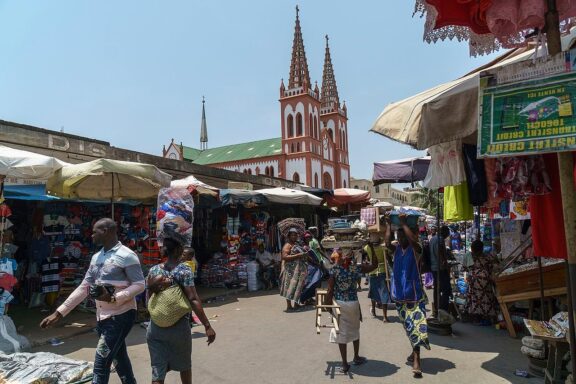
The Grand Marché, known locally as the “Nana Benz Market,” derives its name from the influential Togolese businesswomen who made their fortune selling textiles here.
Spread across multiple blocks, the Grand Marché is divided into multiple sections, each specializing in different goods such as spices, textiles, and crafts.
Its narrow aisles are flanked by stalls offering a cornucopia of colors, aromas, and sounds. This is the place to experience the city’s commercial heartbeat firsthand.
2. Lomé Cathedral
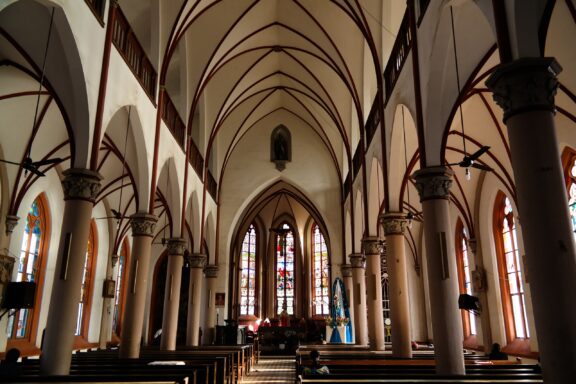
The Cathedral of Lomé, officially known as the Sacred Heart Cathedral, offers a serene contrast to the busy city outside. It is a major religious landmark in Lomé and one of the city’s oldest churches.
Whether religious or not, the Cathedral of Lomé is worth visiting for its grandeur and peaceful ambiance. It offers a chance for contemplation and opportunities to witness local community activities, including various services and religious events.
3. Lomé Beach
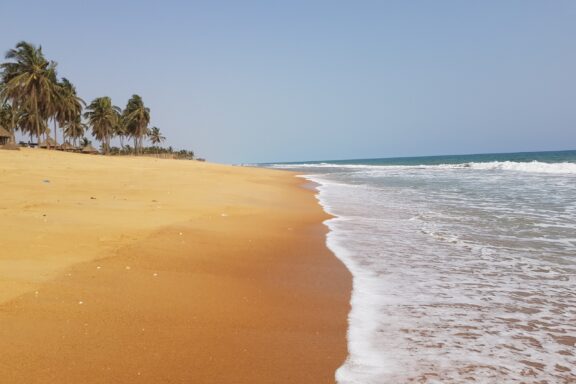
The Beach of Lomé serves as a delightful retreat for beach lovers. Stretching along the Gulf of Guinea, this shoreline offers an excellent venue for water sports and beachside activities.
Apart from swimming and sunbathing, visitors can try jet skiing, paddle boarding, or simply building sandcastles with the kids. Street food vendors offer local delicacies for those wanting to indulge in Togolese cuisine while enjoying the ocean views.
4. Voodoo Market in Lome
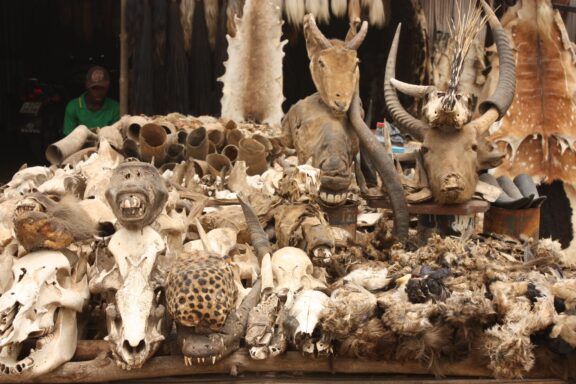
Diving deep into Togo’s spiritual and traditional aspects, the Voodoo Market in Lomé offers an experience unlike any other. The market, also known as Akodésséwa Fetish Market, is one of the world’s largest voodoo markets.
For those interested in understanding the spiritual practices that influence daily life in Togo, the Voodoo Market is a must-visit. It offers an opportunity to learn about traditional African religions and even consult with voodoo practitioners if you’re curious.
5. Palace of Lome
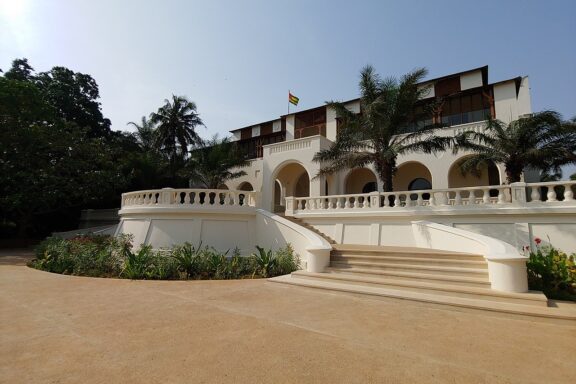
A blend of historical relevance and contemporary culture, the Palace of Lomé is a prominent cultural institution. Located in a lush garden, this edifice presents a unique setting for art exhibitions and cultural events.
Art enthusiasts and history buffs alike will find the Palace of Lomé enriching. The palace often hosts temporary exhibitions, lectures, and workshops, making each visit a unique experience. The garden also serves as an oasis of calm, perfect for leisurely walks.
Frequently Asked Questions
What is the best time to visit Lomé?
The dry season from November to April is generally considered the best time to visit, as the weather is more pleasant and outdoor activities are more accessible.
Is Lomé safe for tourists?
While Lomé is generally safe for tourists, there are specific concerns to be aware of. Pick-pocketing is common, especially along the beach and in market areas. Therefore, it’s advisable to exercise heightened caution in these spots, keeping valuables secure and staying vigilant.
Additionally, violent crimes are mostly confined to specific neighborhoods, which are best avoided. Overall, exercising increased caution and taking preventive measures is essential to ensure a safe visit.
How can I get around the city?
You can get around Lomé via taxis, motorcycle taxis, and minibusses known locally as “tro-tros.”
Is English widely spoken, or should I know some basic French phrases?
French is the official language and is widely spoken. English is not as commonly understood, so knowing some basic French phrases can be helpful.
What is traditional food like in Lomé?
Different cultures, including the indigenous Ewe people and French and West African culinary traditions, influence the traditional cuisine in Lomé. It’s characterized by using ingredients like maize, yam, fish, and an array of spices.
The proximity to the Atlantic Ocean provides abundant seafood, while the agricultural richness of the region supplies fruits and vegetables. This blend of local and foreign influences makes Lomé’s cuisine a rich tapestry of flavors.
What are must-try authentic Lomé dishes?
If you’re visiting Lomé, your culinary journey wouldn’t be complete without trying the following local dishes:
• Akple and Fetri Detsi: A traditional Ewe dish of sour corn dough served with a tomato-based fish stew.
• Djenkoume: A tomato-based cornmeal dish often served with chicken or fish.
• Ablo: A steamed cornbread often served with bean stew or fried fish.
• Fufu and Palm Nut Soup: Fufu is made from boiled yams or cassava, pounded until smooth, and often served with a rich palm nut soup containing fish or meat.
Final Thoughts
Lomé, with its unique blend of history, culture, and natural beauty, offers an enriching experience for any traveler. Whether you’re interested in diving into the local cuisine, exploring historical landmarks, or simply soaking up the atmosphere at the beach, the city has something to offer everyone.
Its diverse population adds to the cosmopolitan vibe, making it not just a snapshot of Togo but a microcosm of West Africa. Overall, Lomé is a captivating destination worth a visit, offering a comprehensive and enjoyable glimpse into the soul of this often-overlooked African nation.
Image Sources and Copyright Information
- Map of Togo with Major Cities and Borders: © Peter Hermes Furian/Shutterstock
- Map Highlighting Lomé in Togo: © Below the Sky/Shutterstock
- Colonial Building in Lomé: © Beata Tabak/Shutterstock
- Independence Monument in Lomé, Togo: © Homo Cosmicos/Shutterstock
- Aerial View of Lomé Cityscape: © SebEsteban/Wikimedia | CC BY-SA 4.0 International
- Market Vendor Carrying Produce on Head in Busy Street Market: © Anton_Ivanov/Shutterstock
- Port of Lomé with Cargo Ships and Containers: © LEONARDO VITI/Shutterstock
- Street Market in Lomé with Cathedral in the Background: © Dan Sloan/Wikimedia | CC BY-SA 2.0 Generic
- Interior View of Lomé Cathedral with Arched Ceilings and Stained Glass Windows: © Homo Cosmicos/Shutterstock
- Palm-lined Beach with Golden Sand and Blue Ocean Waves: © SoleneBa/Shutterstock
- Traditional Market Stall with Animal Skulls and Artifacts: © jrwebbe/Flickr
- Palace of the Governors in Lomé: © Nero2022/Wikimedia | CC BY-SA 4.0 International